

You’ll be thrilled to discover a whole series of dwarf weeping trees that, even though small, still boast a weeping, trailing branch habit. Here are a few of our favorite ‘Pendula’ varieties!
Who doesn’t feel a twinge of emotion upon seeing the wavy fronds of a weeping willow sway in the breeze? Swaying leaves that great artists have forever tried to paint on their canvas?
After a quick intro onto how this weeping appeared, we’ll list 6 of our most beautiful small weeping trees.
There is a number of species that have acquired their weeping habit after a certain genetic mutation occurred on one of their branches. Let’s say an ash or birch tree exhibits this trait on a branch in its natural environment, for example. Once a savvy eye has noticed this trait, either in the wild or among the thousands of trees in a nursery, the branch is carefully collected and reproduced through both cuttings and grafting.
→ Note: for newly grafted trees, remember to stake them properly to keep the graft joint from breaking.
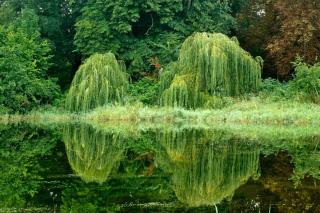
The human touch is also essential: pruning will play a defining part in how regular or random any given tree will grow to become. Pruning also helps lighten the tree up, since thinning that thick mat of weeping branches will let more light seep through the tree. It’ll give the plant a more transparent, see-through dimension. Indoors, a weeping fig needs pruning to truly show a weeping form.
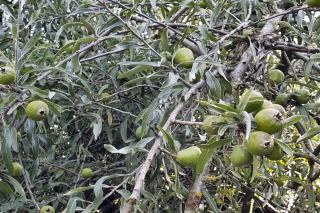
An advantage of this very hardy pear tree is that it can adapt to any type of soil, and copes well with both drought and sea spray. At maturity, its size reaches about 15-18 feet (5-6 meters) high, for about 15 feet across (5 meters).
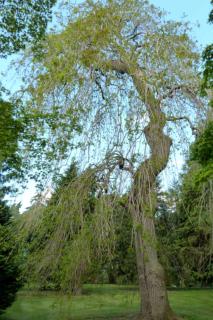
The ‘Pendula’ habit will drape over a barrel composition magnificently, especially if you prune the weeping twigs to the same length every winter. Typically grafted at a height of 6 feet (2 meters), it will not grow any taller than 15 feet (5 meters) in time, and about 12 feet across (4 meters). Best plant it in cool soil.
This weeping birch brings an original touch in small gardens, especially when grafted at the tip at about 6-7 feet (2 meters): this forms a perfect umbrella-like treehouse that children love playing in! When grafted to a rootstock stump, however, it will grow into a dramatic twisting contortionist-like shape that can be very surprising as well.
Like all birch trees, the white bark that twinkles in the dappled sunlight adds appeal, too. The superficial root system means this tree can survive very well in containers and large garden boxes, notwithstanding the fact that it’s a slow grower as well. It’ll top out at 15-18 feet (5-6 meters) when planted in the ground, less so for containers.
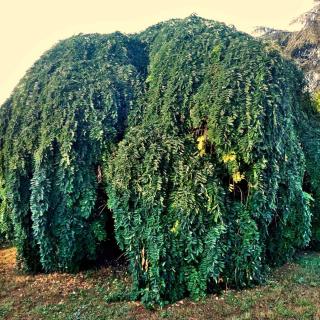
This cultivar generally reaches 18 to 20 feet (6 to 7 m) high and 12-15 feet (3-4 m) across as it matures, and age renders it ever more circumvoluted. Whichever soil and exposure you have will suit it well, it doesn’t really matter.
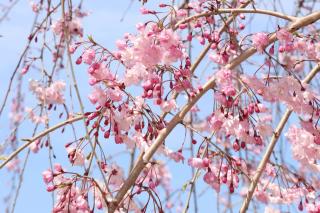
Cherry trees also add value to the fall garden thanks to the colors of their leaves. They appreciate cool soil but it should not hold water for very long. Full sun exposure suits it best. The rootstock is what determines the ultimate size they can reach. Generally, they won’t exceed 12-15 feet (4-5 meters).
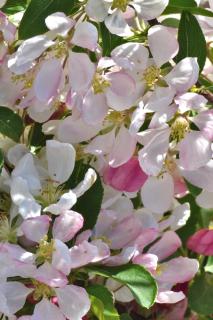
The ‘Red jade’ shown here will bear white flowers and small light red fruits, whereas the ‘Royal Beauty’ exhibits violet tones (6 x 6 feet, or 2 x 2 meters tall and wide). Plant either in cool acidic soil, or rich neutral soil.